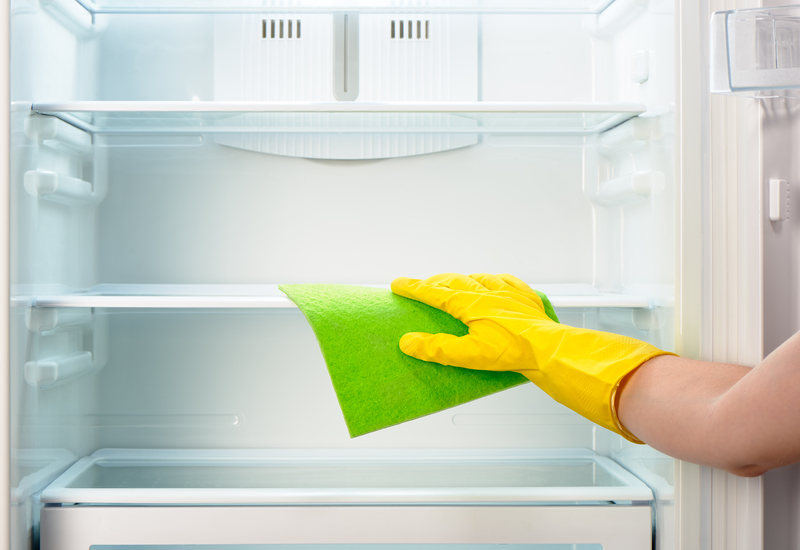How to Safely Remove Stubborn Burnt Residue from Stovetops
Posted on 17/06/2025
How to Safely Remove Stubborn Burnt Residue from Stovetops
Have you ever struggled to clean burnt-on stains from your stovetop? Whether you're a culinary enthusiast or someone who cooks just to get by, burnt residue on stovetops is a common headache. Not only can it be unsightly, but it can also make your kitchen look and feel less hygienic. If you've been wondering how to remove stubborn burnt residue from stovetops without causing damage or using harsh chemicals, you're in the right place.
This guide takes you through safe and effective methods to get your stovetop sparkling clean. From gentle home remedies to powerful commercial products, we'll cover step-by-step strategies for every stove type and mess level. Let's dive in and learn how to easily remove burnt residue from stovetops and keep them looking like new!
Understanding Stubborn Burnt Residue on Stovetops
Before removing stubborn burnt-on stains, it's helpful to understand what causes them and why they can be difficult to clean:
- Food Spills: Ingredients like sugar, sauces, and oils can caramelize and harden on hot surfaces, causing tough stains.
- High Heat: Excessive heat burns food particles, which bond tightly to the stovetop's surface.
- Delayed Cleaning: Waiting too long before cleaning allows residue to solidify, making it more difficult to remove.
Different stovetop materials (glass, ceramic, stainless steel, enamel) can each react differently to burnt-on gunk and require specific care to avoid scratches or damage.
Why Safety Is Important When Cleaning Burnt Residue
Using the wrong cleaning method or product can:
- Scratch delicate tops (especially glass and ceramic)
- Remove protective coatings
- Leave toxic residues that can later contaminate food
- Voiding the warranty of your appliance
That's why it's essential to use safe and effective solutions carefully tailored to your stovetop type.

Essential Supplies for Cleaning Burnt Stovetops
Before you begin removing stubborn burnt stains from your stove, gather the right cleaning tools. Here's what you'll need:
- Soft microfiber or cotton cleaning cloths
- Non-scratch sponges (avoid steel wool on glass or ceramic)
- Baking soda
- White vinegar
- Dish soap (preferably grease-fighting)
- Plastic or silicone scraper
- Spray bottle
- Commercial stovetop cleaner (optional, for persistent stains)
- Gloves (to protect your hands)
Optional Supplies:
- Lemon juice (for natural cleaning power and fresh scent)
- Razor blade scraper (for glass stove tops only!)
- Paper towels
Step-by-Step: How to Safely Remove Stubborn Burnt Residue from Stovetops
Follow these careful steps to protect your stove and restore its shine:
Step 1: Ensure Your Safety
- Switch off the stove and allow the surface to cool completely to avoid burns.
- Unplug electric stovetops if necessary.
- Open windows or turn on the exhaust fan for ventilation, especially if using commercial cleaners.
Step 2: Remove Any Loose Debris
- Wipe the surface gently with a dry cloth or paper towel to remove loose crumbs and debris.
- Avoid pushing particles into cracks or burners.
Step 3: Treat the Burnt Residue
For Glass and Ceramic Stovetops:
- Mix 2 tablespoons of baking soda with enough water to make a thick paste.
- Spread the paste generously over the burnt areas.
- Place a damp warm cloth on top of the paste and let it sit for 15-20 minutes.
- Gently scrub in a circular motion with a non-scratch sponge.
- Use a plastic scraper (never metal) at a 45-degree angle to carefully lift stubborn spots.
For More Persistent Stains:
- Mix equal parts vinegar and water in a spray bottle, spray generously, and let sit for 15 more minutes.
- Reapply baking soda paste if necessary.
- For glass stovetops, use a razor blade scraper gently (held flat against the surface) to remove crusted residue.
Always test any scraper in a small corner first to avoid scratching!
For Gas or Enamel Stovetops:
- Remove grates and burner caps and soak them in a sink filled with hot, soapy water for at least 30 minutes.
- Use a non-abrasive scrubbing pad to clean softened residue off.
- Baking soda and vinegar paste can be used on the stove top surface, following the general method above.
- Wipe thoroughly and dry before replacing grates and burners.
Step 4: Final Wipe & Polish
- Use a clean, damp microfiber cloth to remove all paste and cleaner residue from the stove surface.
- Buff dry with a separate dry cloth for a streak-free shine.
- Polish glass or stainless steel with a dedicated cleaner or diluted white vinegar for extra sparkle.
Expert Tips for Removing Burnt-On Stains from Stovetops
- Act Quickly: The sooner you treat burnt stains, the easier they are to remove.
- Soak First: Letting baking soda or a gentle cleaner sit for 10-15 minutes does most of the work!
- Scrape Carefully: Only use approved tools for your stovetop type; avoid metal on glass or enamel surfaces.
- Repeat as Needed: Very stubborn burnt-on gunk may require several rounds of cleaning.
- Regular Maintenance: Wipe your stovetop after each use to prevent buildup.
- Avoid highly acidic or abrasive cleaners--these can damage most surfaces.
Safe Commercial Products to Remove Burnt Residue from Stovetops
If homemade solutions aren't effective, consider safe commercial stovetop cleaners:
- Cerama Bryte: Popular for glass and ceramic stovetops; gentle abrasive action without scratching.
- Weiman Cook Top Cleaner: Foaming, non-abrasive, and excellent on grease and burnt stains.
- Barkeeper's Friend: Effective for many surfaces (read manufacturer's guidance first).
Always follow the manufacturer's instructions and test on a small, hidden area before widespread use.
Stovetop Cleaning Don'ts: What to Avoid
When removing stubborn burnt residue from stovetops, always avoid these common mistakes:
- Don't use steel wool or abrasive pads (unless the manufacturer approves)--these can scratch and permanently damage surfaces.
- Never use a knife or metal spatula as a scraper.
- Don't use oven cleaner on stovetops unless specifically listed as safe.
- Don't submerge electric stove burners or control knobs in water.
- Don't use bleach or cleaners with chlorine, as they can discolor and degrade some stovetops.
Prevention: How to Reduce Burnt Residue Buildup on Stovetops
- Wipe spills immediately: Attack splatters and spills as soon as the surface cools enough to touch.
- Use burner liners: (If safe for your model) to catch drips and splatters before they reach the stove surface.
- Cook carefully: Avoid high temperatures that cause food to burn onto the stove.
- Weekly cleaning: Give your stovetop and burners a thorough wipe down once a week.

FAQs About Removing Stubborn Burnt Residue from Stovetops
Can I use a razor blade scraper on all stovetops?
Only use a razor blade scraper on glass stovetops, and always hold it flat to avoid gouging. Never use metal tools on ceramic, enamel, or induction surfaces.
What if burnt stains don't come off after several attempts?
Try repeated soaks with baking soda and vinegar paste, alternating with a gentle commercial cleaner. In extreme cases, consult your stovetop manufacturer for approved cleaning solutions.
Are harsh chemicals ever necessary?
For most stubborn burnt-on residue, homemade methods like baking soda paste or safe stovetop cleaners are sufficient. Reserve harsh chemicals as a very last resort, and only if verified safe for your stove's finish.
How can I keep my stovetop looking new?
Wipe it down after each use, clean up spills right away, and perform a deeper clean weekly. Prevention is the best strategy!
Conclusion: Restore Your Stovetop's Shine the Safe Way
Knowing how to safely remove stubborn burnt residue from stovetops ensures a cleaner, healthier kitchen and protects your investment. By using gentle cleaning agents like baking soda, white vinegar, and non-scratch tools, you'll preserve your stovetop's finish and function for years to come. Remember: consistent maintenance is the easiest way to keep burnt stains at bay! For persistent gunk, don't be afraid to repeat the process or use a specialty stovetop cleaner--just always play it safe for your stovetop's material.
Ready to tackle your next kitchen mess? Save this guide and enjoy a spotless, sparkling stovetop every day!




